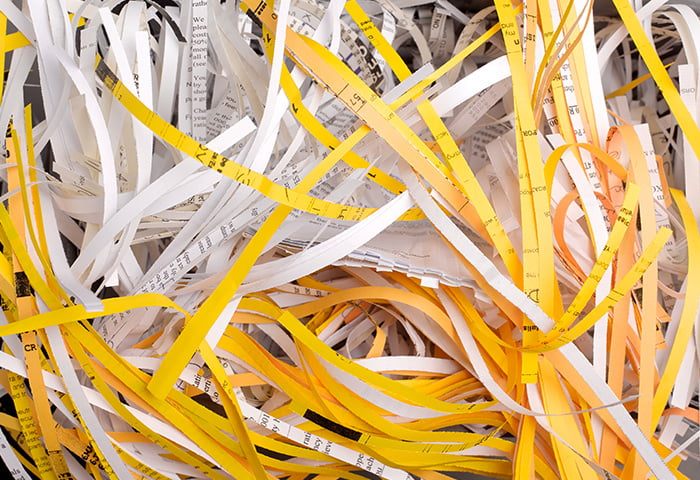How to clear your browser cache on Mac or MacBook
Emptying your Mac browser cache is quick and easy — just like deleting cookies or clearing your browser history on Mac. And once you know how to clear your browser cache on one web browser, you’ll find the process is basically the same on other browsers.
Your browser cache collects data from all the websites you visit. This data quickly piles up, so you should clear the browser cache on your Mac regularly to speed up your browser and keep it running smoothly. We’ll walk you through how to clear the browser cache on Safari, as well as the steps for clearing cache on Google Chrome and deleting cache files in Firefox.
How to clear your Safari browser cache
Here’s how to clear the browser cache in Safari:
-
Click the Safari drop-down menu and select Preferences.

-
Click the Advanced icon at the top and tick the box at the bottom for “Show Develop menu in menu bar.”

-
Select the Develop drop down menu and click Empty Caches.

There’s also a keyboard shortcut for emptying the cache in Safari: Command + Option + E. This shortcut automatically clears the Safari cache without you having to search for it.
How to clear your Google Chrome browser cache
Here’s how to clear the browser cache for Google Chrome on a Mac:
-
Click on the three dots in the top-right corner of your Chrome browser window and select Settings.

-
On the left, choose Privacy and security and then select Clear browsing data.

-
Under Time range, choose how far back you want your data to be cleared. All time will clear all of your cached data.

-
Check the box for Cached images and files and then hit Clear data.

To clear your Mac Chrome cache more quickly, use the keyboard shortcut Command + Shift + Delete.
How to clear your Firefox browser cache
Here’s how to clear the browser cache for Firefox on a Mac:
-
Choose History from the top menu bar and select Clear Recent History.

-
Under Time range to clear, select Everything. Or choose another option to clear only recent cache files.

-
Tick the box for Cache and then click OK.

You can also use the Firefox keyboard shortcut Command + Shift + Delete to pull up the Clear All History menu.
Do you use multiple browsers? Simplify the process by using a browser cleaner tool to tidy up all your browsers automatically. Or, use one of the best secure and private browsers to limit the number of files your computer caches to begin with.
How to clear the system cache on Mac
Before clearing the system cache on your Mac, consider backing up your files, because deleting the wrong system files could cause something to malfunction. Many cached system (and application) files help your device work properly, and they don’t need to be cleaned. But if you want to delete any system files, here’s how to clear your system cache on Mac:
-
Open Finder and from the Go menu, select Go to Folder.

-
Type: ~/Library/Caches/ into the search box and click Go.

-
Select your System or Library caches, depending on what you’re looking for.

-
Now click and look at each folder. Delete unnecessary cache files by dragging them to the Trash and emptying it.
If you’re unsure if you need the files, do a little research by Googling the name of the folder or files. When in doubt, it’s best to leave the file alone.
Sifting through lists of folders to clear your caches is tedious — plus there’s always the chance you could delete the wrong file. Avoid the headache with AVG TuneUp for Mac. This specialized cleaning program will safely and efficiently delete unnecessary cache files, as well as other junk files, poor-quality photos, and more.
How to clear the cache on your Mac using shortcuts
You can clear the cache on your Mac quickly and easily by using shortcuts. Here’s how to clear cache on a MacBook Air or MacBook Pro with just a few keystrokes:
-
Open the Finder window and press shift + command + G.
-
Type ~/Library/Caches into the search box and click Go.
-
Press command + A to select all folders, or manually select individual items.
-
Press and hold command + delete to clear the selected files from your Mac cache.
-
If prompted, click Yes or OK to confirm you want to delete all selected files.
To save even more time, use one of the best Mac cleaner applications to take care of your cache automatically. You’ll get regularly scheduled, automatic clean-up and maintenance that keeps your MacBook’s solid state drive, and the rest of your system, fully optimized.
How to clear your application cache on Mac
Just like the system cache, clearing the application cache on Mac isn’t necessary — many of these files help your apps load faster. But other files in the application cache folder may need to be cleaned up if the app has become buggy.
If you’re unsure what to delete, do some research or use a cleanup and bloatware removal tool to help you.
Here’s how to clear the application cache on Mac:
-
Open Finder, select the Go menu, and click Go to Folder.
-
Type: /Users/[YourUserName]/Library/Caches.
![A Mac "Go to Folder" with the following typed in: /Users/[YourUserName]/Library/Caches](https://www.avg.com/hs-fs/hubfs/Blog_Content/Avg/Signal/AVG%20Signal%20Images/how_to_clear_your_cache_on_a_mac_signal_refresh/img-14.png?width=650&height=225&name=img-14.png)
-
Here you’ll see the user caches for all your apps.

Open each folder you want to delete, select the files inside, and drag them to the Trash. Be sure to empty your trash afterward to delete the files completely.
What is a cache on a Mac?
A cache is a store of files that your computer collects when you visit websites. These temporary cache files are saved and then used to speed up load times when you revisit the page. Cached files let your computer load data from its cache rather than having to download it again from the internet.
When you visit Facebook or YouTube, your browser saves some of the data (images, videos, and more) in the cache. The next time you log on, those images and videos are already in your browser’s cache, so your computer can load them quickly.
But, do you really need to save all those pictures of your old high school friends, baking tutorials, and all the rest? Large cache files — images, videos, other multimedia, and scripts — can clog up your storage space if you never clear your cache.
There are three primary types of caches: system cache, browser cache, and application cache (also known as the user cache). Each type of cache uses different cached files to give you the best possible user experience. Your Mac uses cached data for both Apple’s built-in apps and third-party apps. Your MacOS also uses cached data to run quickly and efficiently.
Along with physically cleaning your computer, internal maintenance — like clearing your caches — is essential to keep your Mac running smoothly.
A build-up of cache files from old websites or apps you never visit can eat up space and slow your system down. That’s when it’s time to clear out the cache and start fresh. Below you’ll find solutions on how to clear each of your caches to get a faster Mac. And if you have a Windows machine at home, here’s how to clean up and speed up your PC.
What does clearing your Mac cache data do?
Clearing your Mac’s cache data frees up storage space by removing files you no longer need.
Considering your Mac caches data for every website you visit, your browser cache can get crowded awfully quickly. Your system and application caches can also collect a mess of unnecessary files that can take up gigabytes of space. All this cached data can slow down your device considerably.
Cleaning your cache on Mac will free up more disk space. It’s one of the many ways to speed up your Mac and make it run more efficiently.
Other benefits of clearing your cache data include:
-
Protecting your privacy
Clearing your caches deletes personal data connected to your websites and apps. If left unchecked, this information could be accessed by hackers or snoops trying to spy on you.
-
Refreshing online content
Cached elements from websites eventually become obsolete. Clearing your cache ensures you’re seeing the latest versions of your favorite sites.
-
Troubleshooting app issues
Sometimes application updates corrupt cached data. And untested server-side changes can cause apps to malfunction. Clearing your cache can help your apps start anew.
Note that clearing your cache merely restarts the cycle of cached data. As you continue to visit websites or use apps, your device will start collecting cached files again. If your Mac is running slow, a cache purge may be all you need. But clearing cache on Mac isn’t the only solution to Mac performance issues. If you’ve maxed out your memory, you may need to upgrade your RAM.
And although Mac security is generally tighter than Windows , remember that Macs can still get malware, and removing spyware and other Mac malware won’t just benefit your privacy and security — it’ll boost performance too.
Is it safe to clear cache on a Mac?
Clearing your browser cache is a safe and straightforward procedure. Browser cache clearing also helps protect your online privacy — as does clearing your search and browser history and deleting your browser cookies. A cleaner browser is a safer browser.
You should be more careful when dealing with your system and user caches. To make sure you don’t delete important files, read the steps listed above to correctly clear your system caches and user caches — such as when clearing your Photoshop scratch disk.
Thankfully, with specialized Mac cleaner software you can spare yourself the hassle. AVG TuneUp for Mac will thoroughly scan your device for unneeded programs and junk files. It will sift out the files that can be deleted right away, while preserving the files your device needs to properly function.

Should I delete all the cache files on a Mac?
It’s generally not a good idea to empty your Mac’s cache completely. While clearing your Safari cache along with your browser cookies and history won’t have any adverse effects, deleting certain files within the system or user cache may cause apps or services to crash or freeze.
If you’re looking to improve performance or free up space on your SSD or HDD, instead of rushing to delete the “Other” Mac storage, remember that cache files are there to help your system run faster and more smoothly. Be selective about what you jettison, or use a dedicated Mac optimization tool to ditch the junk while keeping what you need. Dedicated optimization software can also perform maintenance tasks like defraging your disk.
Simplify the cache clearing process with AVG TuneUp for Mac
Clearing your cache — and other Mac cleaning techniques — will increase performance and extend the life of your device. But the process can be time-consuming, requiring you to search through many different folders. And tinkering around in the system and user caches can be risky.
AVG TuneUp for Mac is not only a Mac cache cleaner, it’s a multilayered optimization system designed to streamline the entire cleaning process. With this thorough cache cleaner for Mac, you can quickly access and delete all your cache files.
AVG TuneUp will also help you wipe away other unnecessary files and data hiding in your system, like duplicate files and blurry or poor-quality photos. Spend less time rooting around your system and more time doing what you love. Get AVG TuneUp today and watch your Mac run like new again.
FAQs
What is the shortcut to clear cache and cookies on a Mac?
To access the folder where you can clear the cache on your macOS, click a free spot on your desktop to open Finder, then hit shift + command + G. The shortcut to delete the cache and cookies in Safari is option + command + E.
Where is the Safari cache on Mac?
To find the Safari cache on your Mac, go to ~/Library/Containers/com.apple.Safari/Data/Library/Caches, or ~/Library/Caches/ for older macOS versions.
Should I clear cookies on my Mac?
It is usually good digital hygiene to clear cookies on a Mac. Cookies store data about you and some also track your online activity, so clearing them can help strengthen your privacy.
/AVG-How-to-clear-cache-on-your-Mac-Hero.jpg?width=1200&name=AVG-How-to-clear-cache-on-your-Mac-Hero.jpg)













![A Mac "Go to Folder" with the following typed in: /Users/[YourUserName]/Library/Caches](https://www.avg.com/hs-fs/hubfs/Blog_Content/Avg/Signal/AVG%20Signal%20Images/how_to_clear_your_cache_on_a_mac_signal_refresh/img-14.png?width=650&height=225&name=img-14.png)





/AVG-How-to-clear-cache-on-your-Mac-Thumb.jpg)





%20and%20how%20to%20remove%20them%20(Signal)/Signal-What-is-a-PUP-Thumb.jpg)
/Signal-The-best-cleaning-software-for-Mac-Thumb.jpg)



